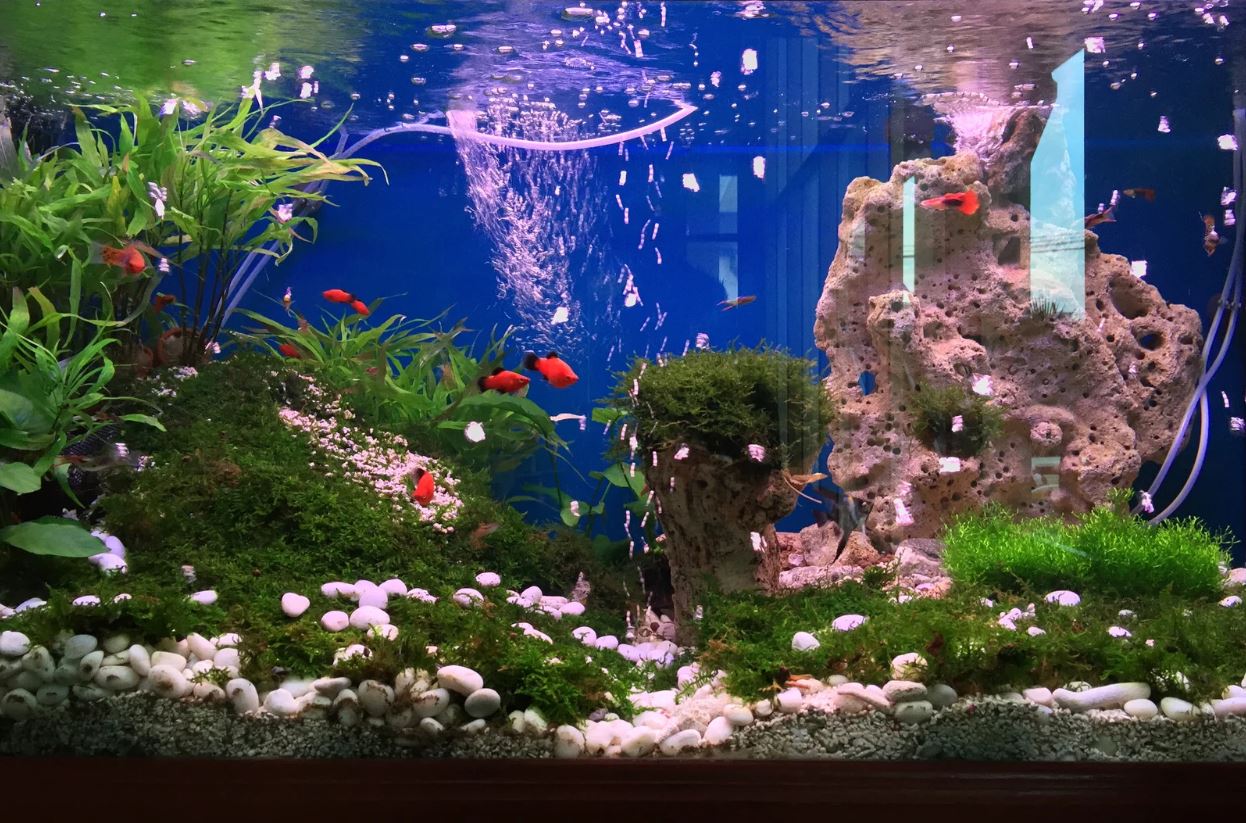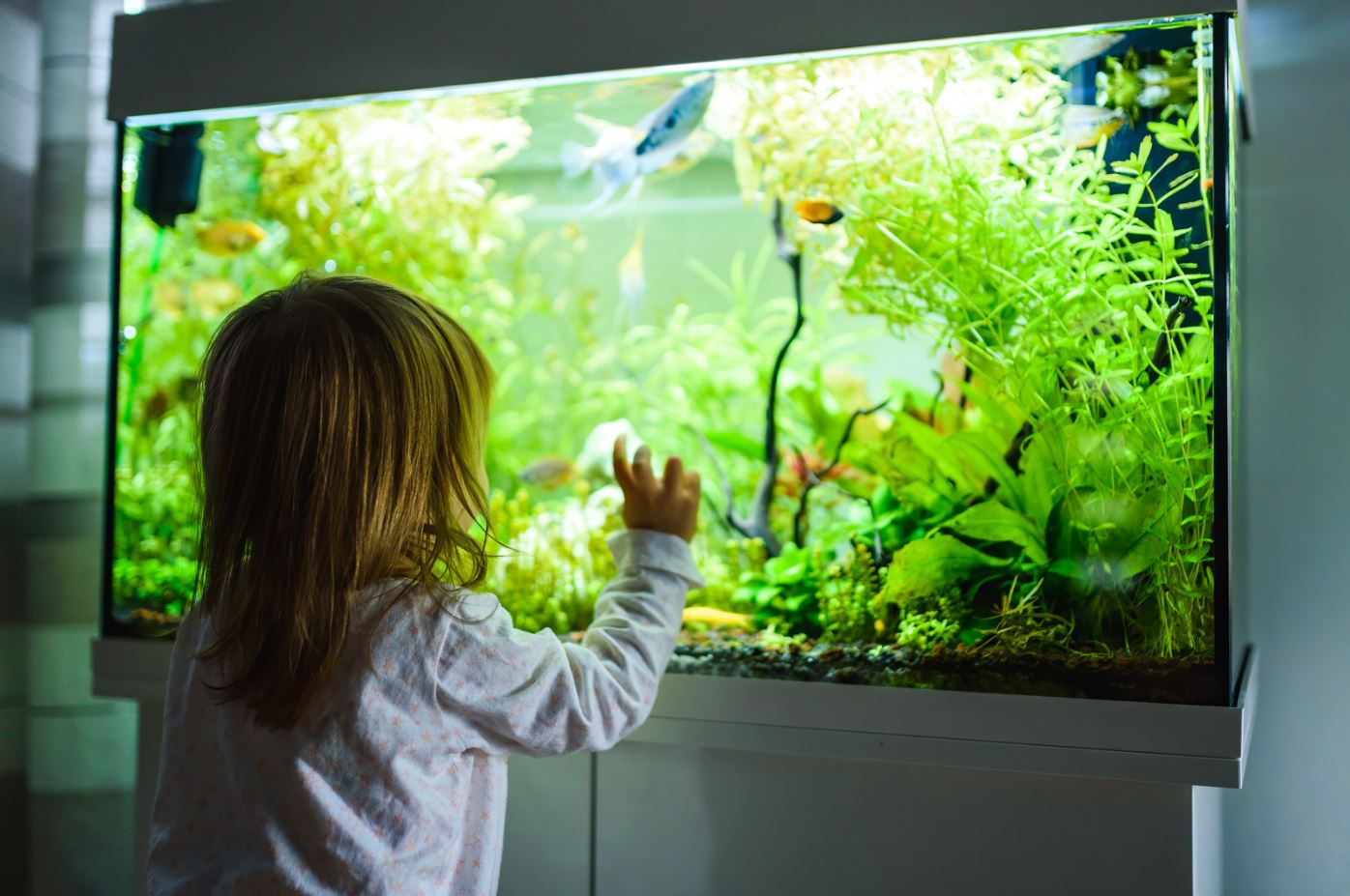
When it comes to setting up a small fish tank, the first step is choosing the right location. You want to find a spot that not only looks good but also provides a stable environment for your aquatic friends. Ideally, you should place your tank in a room where you spend a lot of time, like the living room or home office.
This way, you can enjoy watching your fish swim and interact with their environment. However, avoid areas with direct sunlight, as this can lead to excessive algae growth and temperature fluctuations that could stress your fish. Another important factor to consider is the surface on which the tank will sit.
Make sure it’s sturdy and level, as an uneven surface can lead to cracks or leaks over time. Additionally, think about accessibility; you’ll need to reach the tank for feeding, cleaning, and maintenance. If you have children or pets, consider placing the tank in a location that minimizes the risk of accidental bumps or spills.
Key Takeaways
- Choose a location away from direct sunlight and drafts for your small fish tank to maintain stable water temperature and minimize algae growth.
- Consider the appropriate size and type of small fish tank based on the number and type of fish you plan to keep, as well as your available space and budget.
- Set up a filtration system that is suitable for the size of your small fish tank and provides adequate mechanical, biological, and chemical filtration.
- Add substrate and decorations to your small fish tank to create a natural and stimulating environment for your fish, while also providing hiding spots and breeding areas.
- Introduce and acclimate fish to your small fish tank slowly to minimize stress and ensure they adjust well to their new environment.
Selecting the Appropriate Size and Type of Small Fish Tank
Choosing the right size and type of small fish tank is crucial for creating a healthy environment for your fish. Generally, smaller tanks (like 5 to 20 gallons) are easier to manage but can be more challenging when it comes to maintaining stable water conditions. If you’re new to fishkeeping, starting with a slightly larger tank can provide more room for error in terms of water quality and temperature fluctuations.
A 10-gallon tank is often recommended for beginners, as it strikes a balance between manageability and stability. In terms of tank types, you have several options: glass tanks are durable and provide a clear view of your fish, while acrylic tanks are lighter and less prone to breaking but can scratch more easily. Consider your lifestyle and preferences when making this decision.
If you plan to keep a variety of fish species, ensure that your tank is appropriately sized to accommodate their needs. Researching the specific requirements of the fish you wish to keep will help you make an informed choice.
Setting Up the Filtration System for Your Small Fish Tank

A reliable filtration system is essential for maintaining a healthy environment in your small fish tank. The filter helps remove debris, toxins, and excess nutrients from the water, ensuring that your fish live in clean conditions. When selecting a filter, consider the size of your tank and the type of fish you plan to keep.
For smaller tanks, hang-on-back filters or sponge filters are often effective choices. They provide adequate filtration without taking up too much space. Once you’ve chosen a filter, installation is straightforward.
Follow the manufacturer’s instructions carefully, ensuring that all components are securely attached. After setting up the filter, run it for at least 24 hours before introducing any fish. This allows beneficial bacteria to establish themselves in the filter media, which is crucial for breaking down harmful ammonia and nitrites produced by fish waste.
Regular maintenance of your filtration system will keep it running efficiently and help maintain optimal water quality.
Adding Substrate and Decorations to Your Small Fish Tank

Adding substrate and decorations to your small fish tank not only enhances its aesthetic appeal but also provides essential hiding spots and territories for your fish. When selecting substrate, consider materials like gravel or sand that are safe for your chosen species. For example, some bottom-dwelling fish prefer sand as it’s gentler on their bodies, while others thrive in gravel environments.
Rinse the substrate thoroughly before adding it to the tank to remove any dust or debris. Decorations play a vital role in creating a stimulating environment for your fish. You can use natural elements like rocks and driftwood or opt for artificial plants and ornaments.
Just ensure that any decorations are free from sharp edges that could harm your fish. Arrange them thoughtfully to create open swimming spaces while providing plenty of hiding spots. This setup will help reduce stress among your fish and encourage natural behaviors.
Introducing and Acclimating Fish to Your Small Fish Tank
Once your small fish tank is set up and running smoothly, it’s time to introduce your new aquatic friends! However, it’s crucial to acclimate them properly to minimize stress and ensure their health. Start by floating the sealed bag containing your fish in the tank for about 15-20 minutes.
This allows the water temperature in the bag to equalize with that of the tank. After that, gradually mix small amounts of tank water into the bag over another 30 minutes to help them adjust to any differences in water chemistry. After acclimation, gently release the fish into their new home using a net to avoid adding any store water into your tank.
This step is important because store water may contain harmful chemicals or pathogens that could disrupt your tank’s ecosystem. Once they’re in the tank, give them some time to explore their new surroundings without interference. Monitor their behavior closely during the first few days; this will help you identify any signs of stress or illness early on.
Monitoring Water Parameters and Maintaining Water Quality in Your Small Fish Tank

Maintaining water quality is one of the most critical aspects of keeping a small fish tank healthy. Regularly monitoring water parameters such as pH, ammonia, nitrite, and nitrate levels will help you ensure that your fish are living in optimal conditions. Invest in a reliable water testing kit so you can easily check these parameters weekly or bi-weekly.
Each species of fish has specific requirements, so familiarize yourself with what’s ideal for your particular setup. In addition to testing water parameters, performing regular water changes is essential for maintaining quality. Aim to change about 10-15% of the water weekly; this helps remove accumulated toxins while replenishing essential minerals.
When doing so, always use a dechlorinator if you’re using tap water, as chlorine can be harmful to fish. Keeping an eye on these factors will not only promote a healthy environment but also enhance the overall well-being of your aquatic pets.
Feeding and Caring for Fish in Your Small Fish Tank
Internal Topics [ https://infos.care ]:
Feeding your fish properly is vital for their health and longevity. Choose high-quality fish food that meets the dietary needs of your specific species—whether they require flakes, pellets, or frozen food. It’s important not to overfeed; a good rule of thumb is to provide only as much food as they can consume within 2-3 minutes.
Overfeeding can lead to poor water quality due to excess waste and uneaten food decomposing in the tank.
Look out for any changes in behavior or appearance that might indicate illness or stress.
Keeping a consistent routine for feeding and maintenance will help you notice any abnormalities more easily. Remember that each species has unique care requirements; researching these will enable you to provide tailored care that keeps your fish happy and thriving.
Troubleshooting Common Issues in Small Fish Tank Set-Up and Maintenance
Even with careful planning and maintenance, issues can arise in small fish tanks from time to time. One common problem is algae growth, which can be unsightly and harmful if left unchecked. To combat this, ensure you’re not overfeeding your fish and maintain proper lighting schedules—typically around 8-10 hours per day should suffice.
If algae persists, consider adding algae-eating species like snails or certain types of fish. Another issue might be fluctuations in water parameters that could stress your fish or lead to illness. If you notice sudden changes in pH or ammonia levels, check your filtration system for clogs or malfunctions.
Regular maintenance and monitoring will help prevent these problems from escalating. If you encounter persistent issues despite your best efforts, don’t hesitate to consult with an aquarium professional or local pet store for advice tailored to your specific situation. In conclusion, setting up and maintaining a small fish tank can be a rewarding experience when done correctly.
By choosing the right location, selecting an appropriate size and type of tank, setting up an effective filtration system, adding suitable substrate and decorations, acclimating your fish properly, monitoring water parameters diligently, feeding them appropriately, and troubleshooting common issues as they arise, you’ll create a thriving aquatic environment that both you and your fish can enjoy for years to come!
FAQs
What are the basic steps to set up a small fish tank safely?
To set up a small fish tank safely, you will need to gather all the necessary equipment, such as a tank, filter, heater, substrate, decorations, and water conditioner. Then, you will need to properly clean and set up the tank, add the substrate and decorations, fill the tank with water, install the filter and heater, and let the tank cycle before adding any fish.
Why is it important to set up a small fish tank safely?
Setting up a small fish tank safely is important because it creates a healthy and stable environment for the fish. Properly setting up the tank ensures that the water parameters are suitable for fish, and that the tank is equipped with the necessary filtration and heating to support aquatic life.
What are the potential risks of not setting up a small fish tank safely?
Not setting up a small fish tank safely can lead to poor water quality, unstable temperature, and inadequate filtration, which can stress and harm the fish. It can also result in the growth of harmful bacteria and algae, and ultimately lead to the death of the fish.
How long does it take for a small fish tank to cycle?
The cycling process for a small fish tank can take anywhere from 2 to 6 weeks. During this time, beneficial bacteria will establish in the tank to break down harmful ammonia and nitrites, creating a stable and healthy environment for fish.
What are some common mistakes to avoid when setting up a small fish tank?
Common mistakes to avoid when setting up a small fish tank include not properly cleaning the tank and equipment, adding fish before the tank has cycled, overfeeding the fish, and not monitoring water parameters regularly. It is also important to avoid overcrowding the tank and choosing incompatible fish species.
Recommended Internet Infos:
Research and Case Study References:
Recommended Internet Infos:
Understanding the Importance of Proper Aquarium Setup
Source: https://pubmed.ncbi.nlm.nih.gov/29034276/
Common Issues in Fish Tank Setups and How to Avoid Them
Source: https://www.thesprucepets.com/how-to-setup-a-fish-tank-1380805
Safe Aquarium Setup and Fish Health
Source: https://www.ncbi.nlm.nih.gov/pmc/articles/PMC5755272/
Recommended YouTube Tips Video:
👉 Please visit more Fish Care Infos.








